
…laden viele zu Aktivitäten an der frischen Luft ein.


…laden viele zu Aktivitäten an der frischen Luft ein.
I’m still impressed by (but unfortunately not familiar with) polyrhythms. Frederick Viner shares a video with contribution of Cordelia Williams. The analysis starts at 43 seconds.
Seit fast einem Jahr fahre ich fast ausschließlich ein Elektrofahrzeug. In Summe funktioniert das Ganze deutlich besser, als ich erwartet hatte. Lademöglichkeiten gibt es meist genug, auch Schnelladesäulen, wenn man unterwegs nachladen muss (die Preise sind allerdings, auch an 22 KW-Säulen, häufig saftig. Kürzlich fielen 84ç an.).
Allerdings kann das Ganze durch die nicht ganz triviale Gemengelage aus Betreibern, Zahlungsarten, Ladesystemen und Fahrzeugelektronik manchmal auch tückisch werden. Mit 25 km Restreichweite suchte ich heute eine Lademöglichkeit. Ergebnisse:
Als Elektrofahrer gewöhnt man sich schnell daran, dass einzelne Ladesäulen aus einem der obigen Gründe hin und wieder nicht funktionieren. So gehäuft wie heute hatte ich das aber bislang nicht.
Wer gewohnt ist, Musik anhand von Lead Sheets zu spielen, sollte wenig Schwierigkeiten haben, zu verstehen, wie die Generalbass-Notation funktioniert. Zumindest nicht mehr nach diesem Video.
Auf dem Bild versteckt sich mutmaßlich Dieterich Buxtehude. Tipp: Er sitzt nicht, wie man vielleicht erwarten würde, an den Tasten.
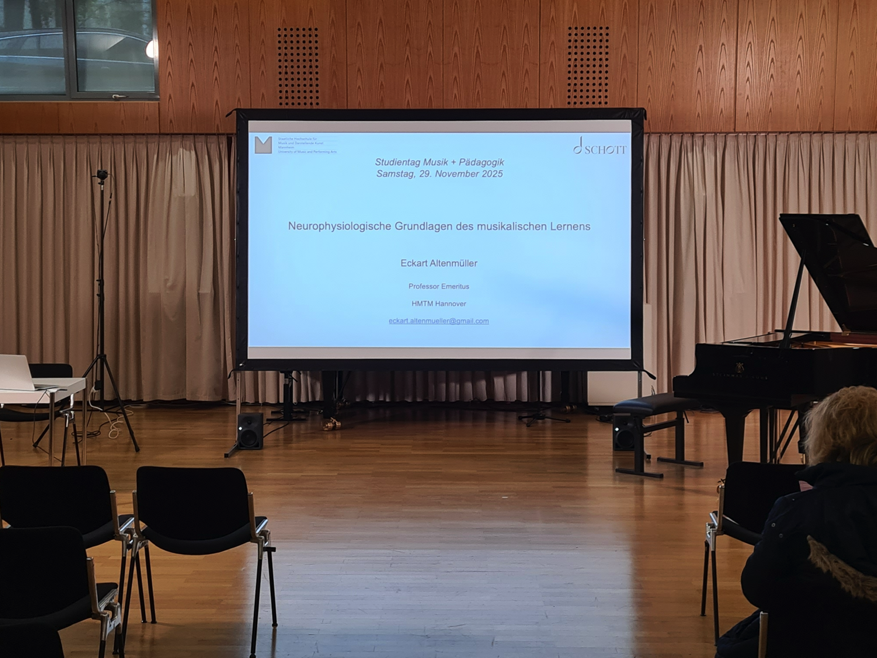
About 10 years ago, I started to learn playing baroque pipe organ music literature (and contributed to a concert a couple of weeks later). As an autodidact, I started by just playing the pieces by sight-reading. I soon realized that this is neither an effective nor efficient method to master them. As a consequence, over all those years, I incrementally filled my practicing toolbox step by step. And I’m still not done yet.
Yesterday, I visited the University of Music and Performing Arts in Mannheim. The overarching topic was »Herausforderung Üben«, covered by the following sessions:
I especially enjoyed the first talk, which was extremely worthwhile. Since the format is established and will continue to take place, I’d like to recommend future issues.
Matt demonstrates his rig, including the Rhodes piano.
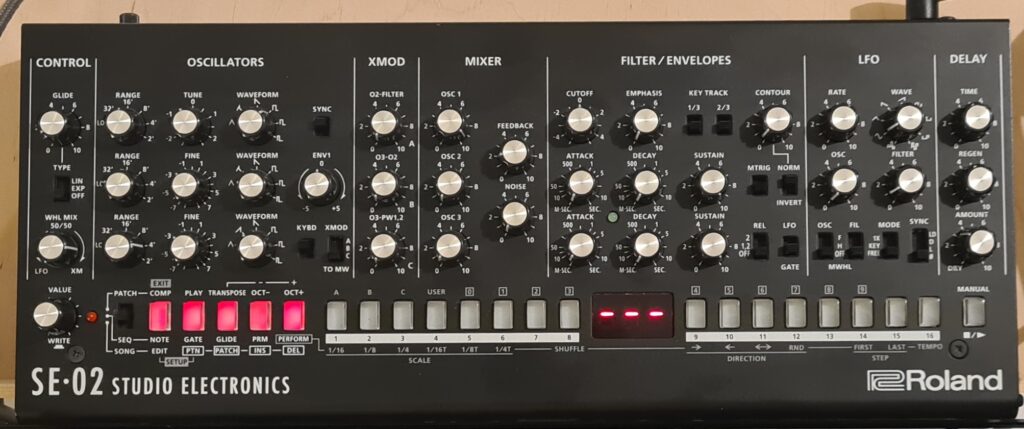
Yesterday the Roland SE-02 suddenly began to behave strange (sounds distorted and did no longer sound as the ones saved). Today, five red buttons and three red dashes are indicating that it finally gave up. It may well be that this is caused by the ON/OFF switch, which already was damaged when I purchased it S/H and which broke only today.
Due to the wee small controls, this synth is a bit difficult to use. Adjusting values often is a bit cumbersome, and moving one of the pots often leads to a neighboured pot being accidentally moved as well. The small display and well hidden features additionally make it less intuitive to program. But sound wise, this synth is one of the best sounding mono synths I ever owned. Despite its size, it can sound big and fat, but also extremely melodic and singing. A lot of its versatility comes from special features, e.g. its XMOD section in conjunction with the SYNC feature. Kebu shared some sequences when it was released back in 2017.
Meanwhile it seems to be discontinued, but fortunately a couple of dealers still have some devices on stock. In case you want some contemporary Minimoog sound, the SE-02 delivers Studio Electronics technology at a bargain.
Update 2025-11-09: I put it as defective on a S/H platform, and it was sold within minutes.
My musical taste was mainly coined by several 70ties musicians such as Joe Zawinul († 2007, Weather Report), Chick Corea († 2021, Return to forever), or Klaus Doldinger († two days ago, Passport). All of them left an incredible heritage, so thanks for all of the music, Klaus.

Letzte Woche war ich wiedermal bei den Silbermann-Tagen in Freiberg. Am Samstag konnten wir mit Jan Katzschke diverse Instrumente in der Umgebung aus der Nähe erleben, unter anderem einen handbetriebenen Zimbelstern.
Am Abend gab es dann ein “Zwillingskonzert” an den Silbermann-Instrumenten in St. Thomas, Strasbourg und im Freiberger Dom, bei dem es jeweils eine Live-Übertragung an den anderen Ort gab. Jan Katzschke spielte außerdem am Sonntag ein Konzert im Silbermann-Museum Frauenstein.
Seit gestern ist auch der XVII. internationale Gottfried-Silbermann-Orgelwettbewerb abgeschlossen. An insgesamt 6 Tagen konnte man den öffentlichen Wertungsrunden beiwohnen und bekam dabei Musikleistungen auf höchstem Niveau geboten.

In order to attach physical MIDI keybeds to divisions in GrandOrgue, just right click (or Ctrl-Click, in case you’re on a Mac) on one of the keybeds in the UI. In the dialog, select »Detect complex MIDI setup«, then press the lowest and highest key on the keybed when being asked to do so.

Recently I had the occasion to get in touch with several historic Iberian instruments, which all challenged us with some short octaves. As a consequence, I wanted to practice with one. First I thought I need to update the Palma organ definition file (ODF) accordingly, but it’s much simpler. From the popup labeled »Event:«, just select »9x Note short octave at low key«. And that’s it. The MIDI events of the lowest octave of your console are rearranged by GrandOrgue, e.g. C through D# are silent, E represents C, F# represents D, G# represents E, and the remaining keys work as usual. Don’t forget to save the settings in case you want to keep them.

The 14th season of vespers on the Dubois organ in Wissembourg is past. Due to other activities, like visiting historic organs in central spain and central Germany, this was the very first season since 2012 in which I was not able to attend (almost) all concerts. Actually, I only attended the first and the last two. Last sunday, Thomas Kientz, who already performed in 2013 and 2018, played an absolutely outstanding closing concert and left an absolutely exited audience. Here’s the programme:

I enjoyed the whole concert, and I have to admit that out of the many phantastic baroque composers of classic French organ masses, Guilain is one of my all time favorites. Thanks Thomas!
As always, I’m extremely grateful to all who contribute to make those outstanding concerts happen.
BTW: Chris Jarrett will perform on 2025-10-05 at 4 PM (note: not 5 PM).

During the MuSeg festival, an organ course with about one dozen of participants took place. We learned a lot from Bine Bryndorf (just one example: historic fingering techniques) and Ángel Montero (for example, how to perform Glosas). Both shared an incredible amount of knowledge, positive energy, plus Angel was quite busy to ensure everything worked smoothly “behind the scenes”.
The course took place at several historic instruments: The two main organs of Segovia’s cathedral, a positive organ in one of its chapels, and the organs of the churches in El Espinar, Abades, Sangarcia, and Marugán (BTW: this valuable instrument has been replicated). Four concerts have been performed: an opening concert by Angel in Sangarcia, Bine on Monday at the smaller one of the two cathedral organs (recording), and course participants on Saturday in El Espinar respectively Sunday in Abades.
There were a couple of reasons why I subscribed to this course:
The course was very rewarding, since I learned much more than I longed for. As a consequence, I’m extremely grateful to all of the people who contributed to make it happen. I met a lot of nice, skilled, and highly motivated people. Plus Segovia obviously is an extremely nice holiday destination.
Pictures:

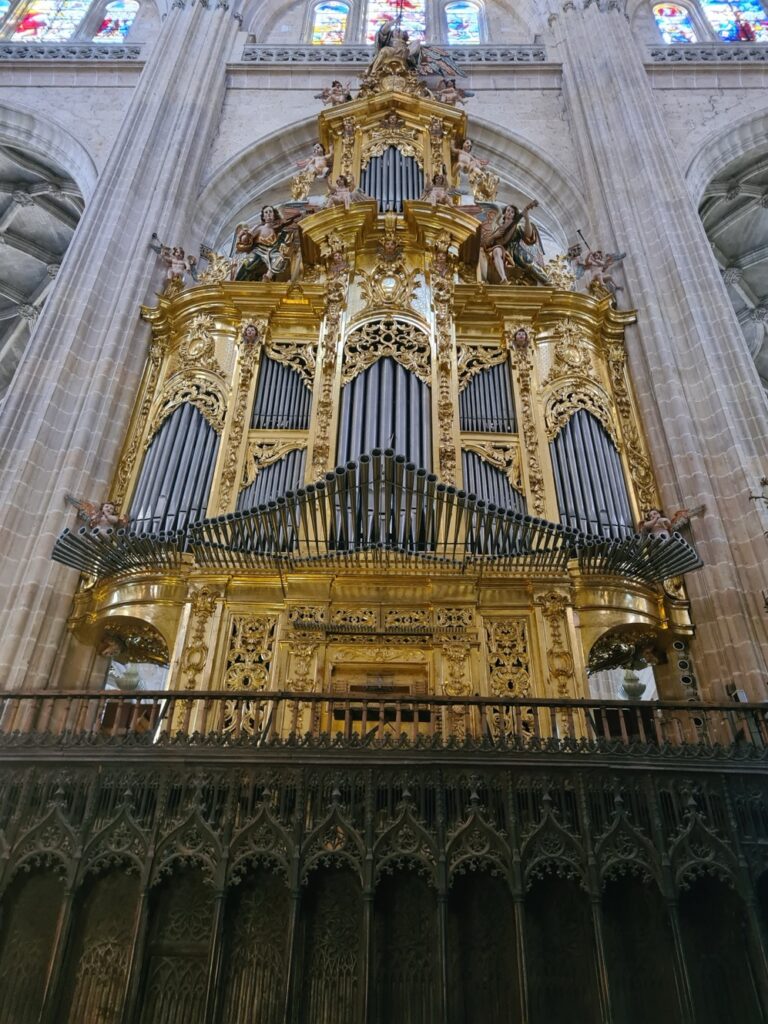
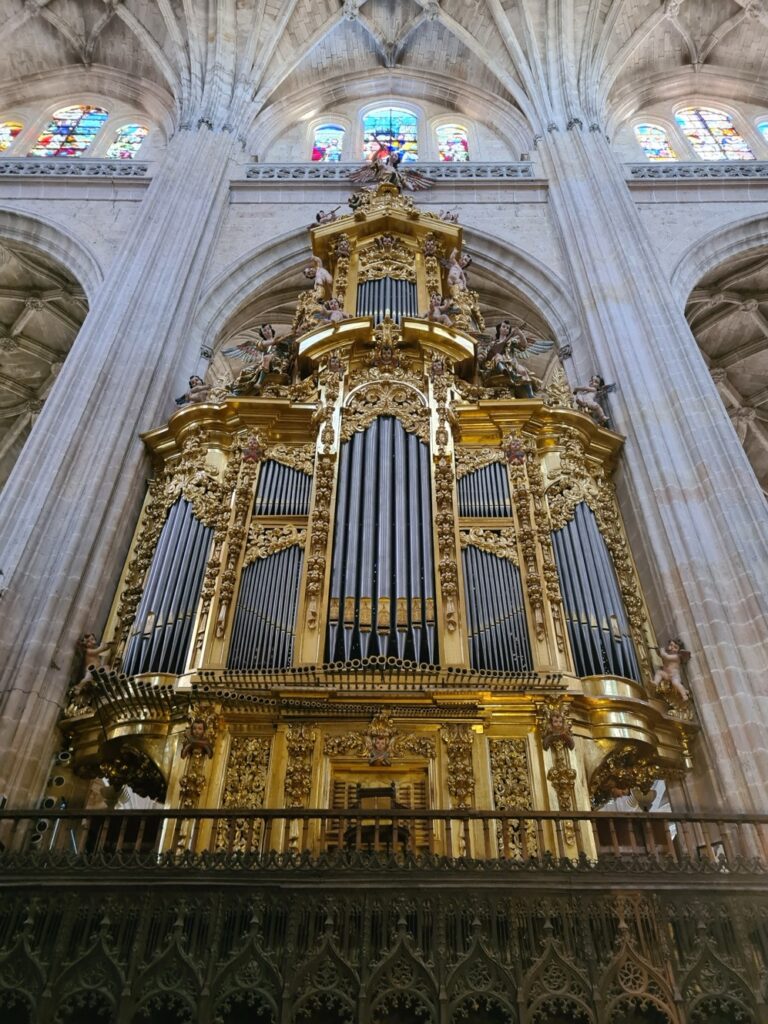
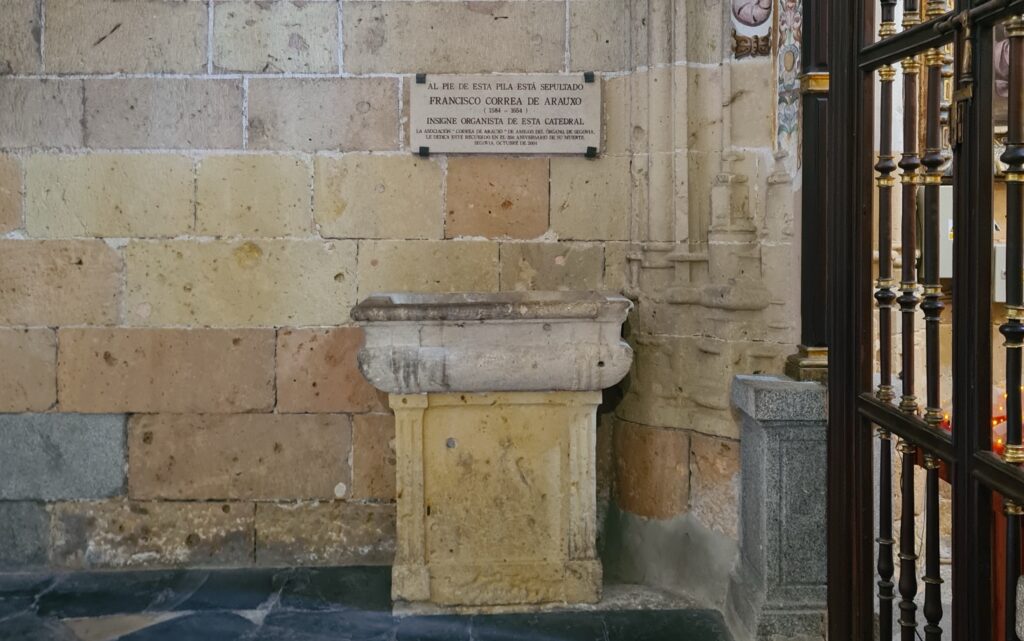
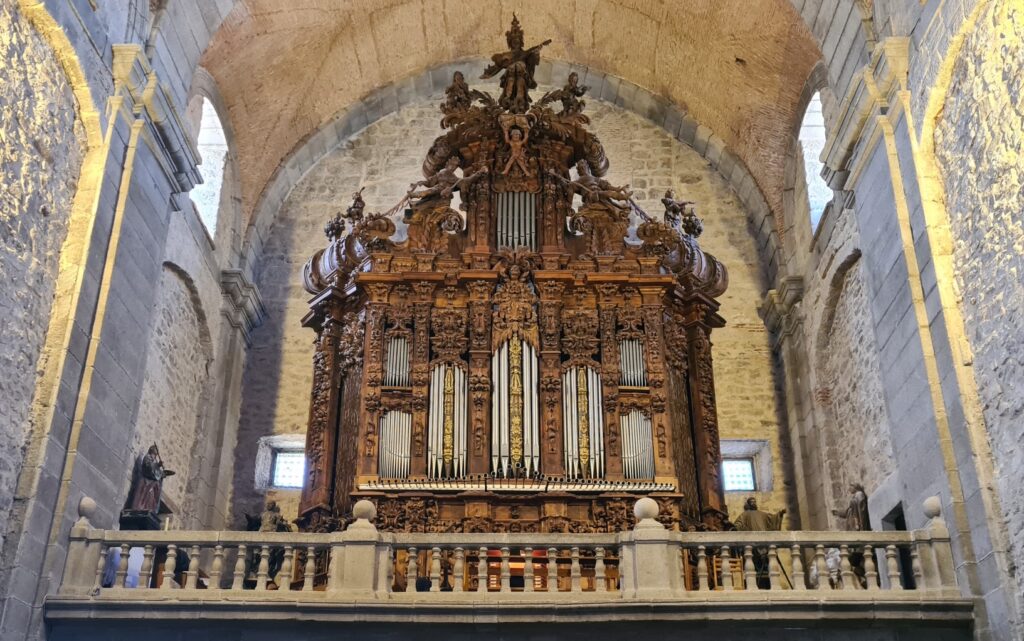
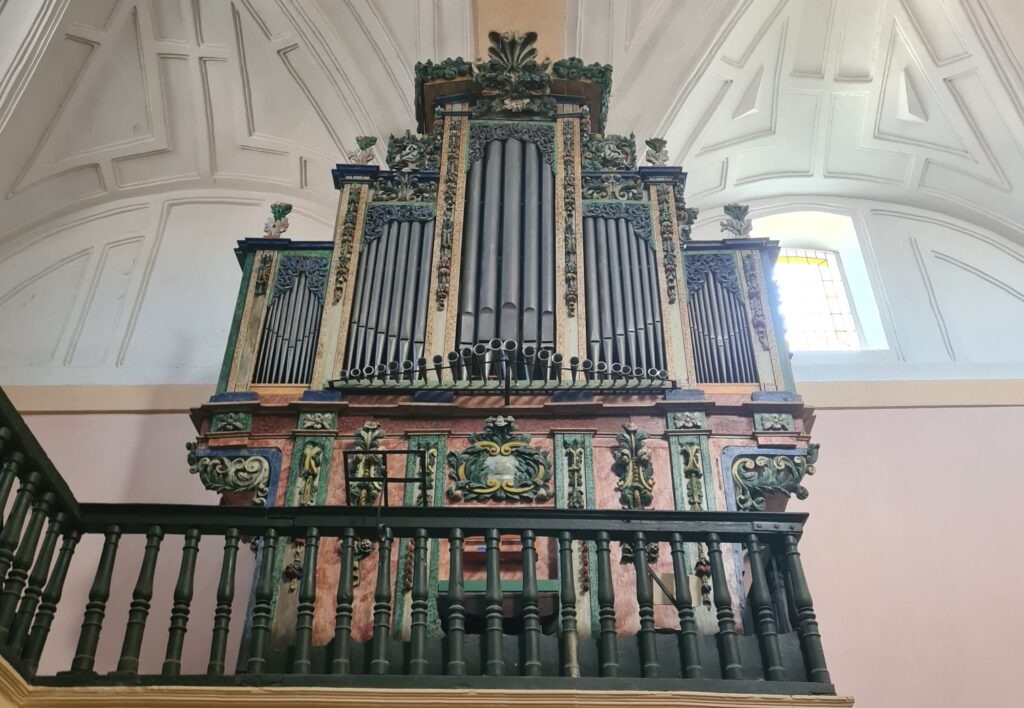
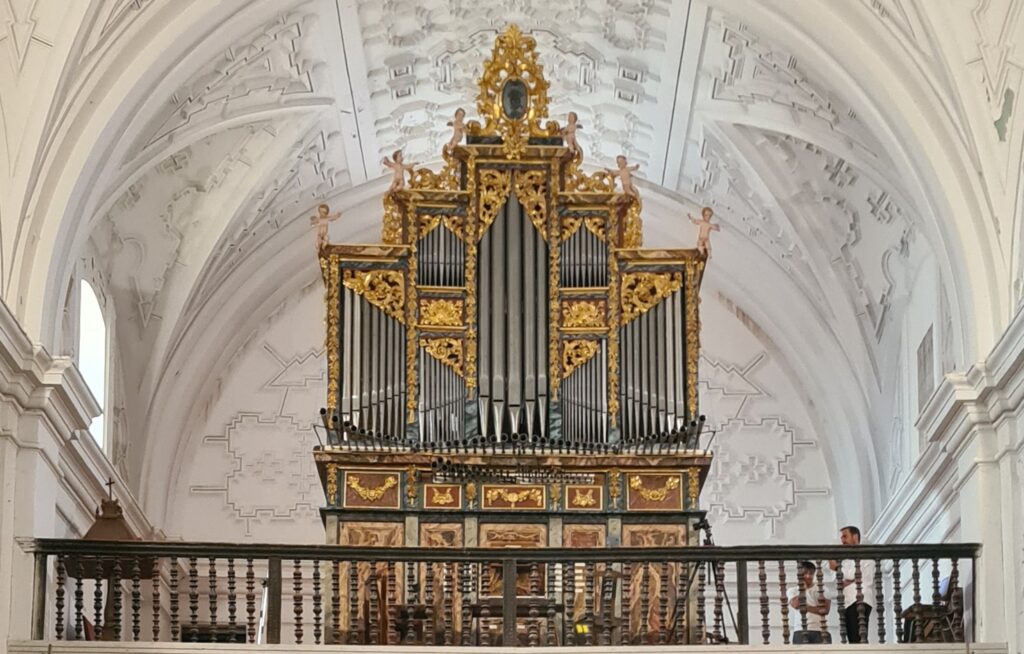
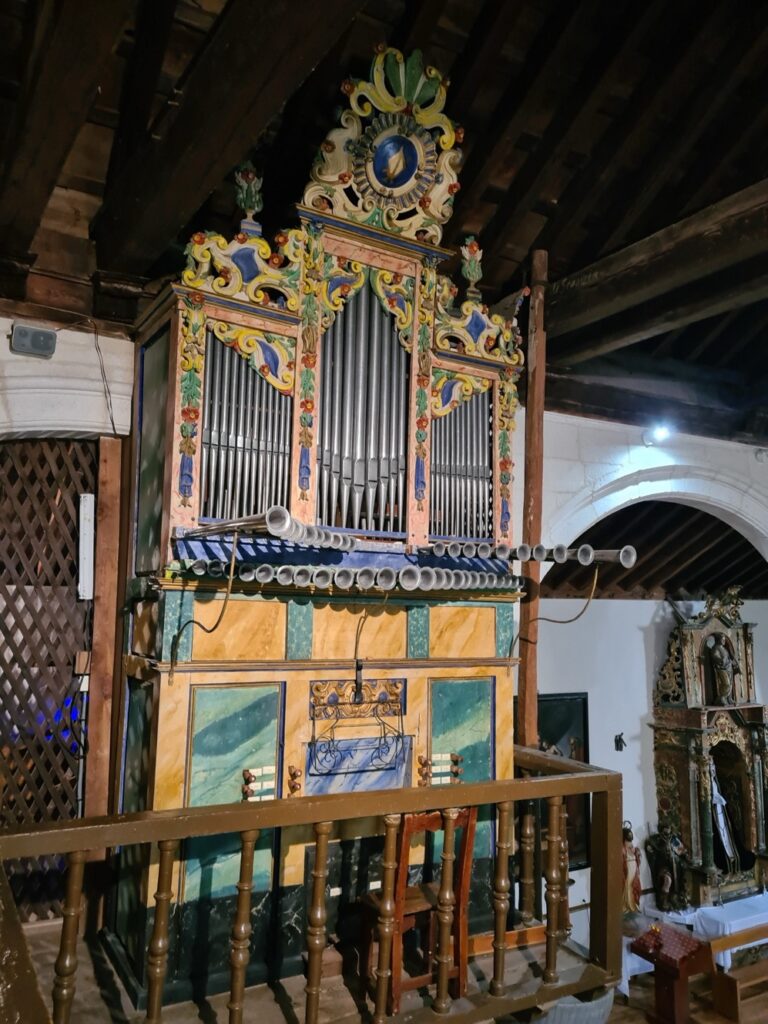
Grégoire Blanc et Thomas Pellerin @ Angers Cathedral.
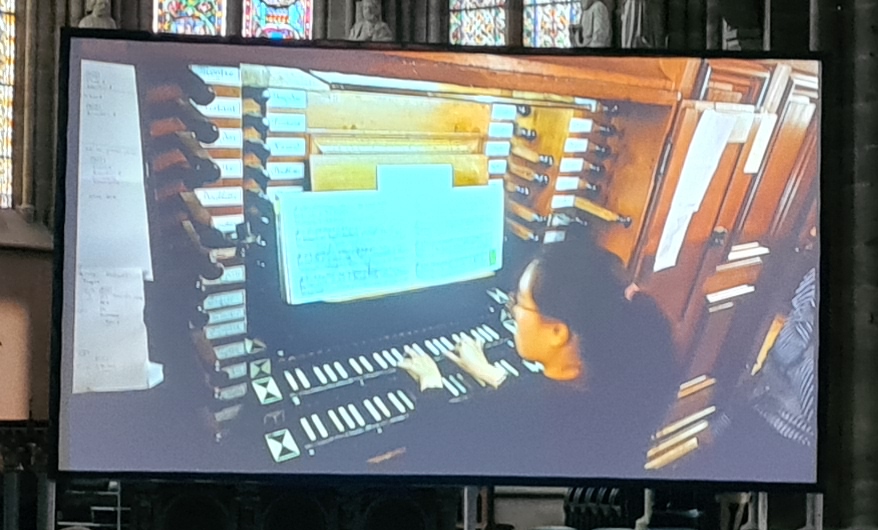
Yesterday three students of the Musikhochschule Saarbrücken performed the first concert of this year’s season. Michael Schwedt played the Suite du premier ton of Louis-Nicolas Clérambault, Helena Fontaine his suite de deuxième ton (which I also play myself) plus two pieces of Jean Adam Guilain (one of my favourite composers of the classic French organ), and Doyoung Ahn performed the pièce d’orgue de Bach plus two pièces de François Couperin.
It was a great joy and pleasure to meet friends and listen to the instrument played by young masters performing pieces composed for exactly this type of instrument.
Thanks a whole bunch to all involved.
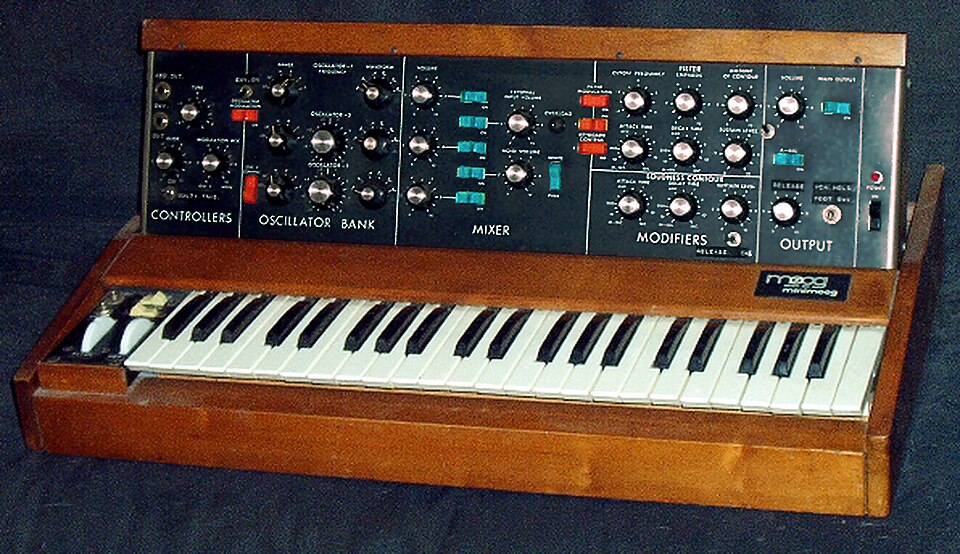
I grew up with the sound of early synthesizers, especially musicians like Keith Emerson or Chick Corea playing Moog synthesizers. Still, the Minimoog is often seen as a reference to other synths.
Of course I always wanted to have that sound right at my finger tips. However, an original Mini (or even the Voyager) was expensive to buy and service. I once owned a Sub 37 which I had to bring to the service workshop at least twice. It’s a nice synth, but it’s not a Minimoog. I sold it during the pandemic.
Behringer provided two reincarnations, the Model D and the Poly D. Both sound great, but lack memory. The Roland SE-02, developed by Studio Electronics, provides memory and sounds phantastic. However, the tiny interface and its cryptic control labels make it hard to use.
A recent reincarnation was the Moog Messenger, an affordable Moog monophonic synthesizer with patch memory and lots of features to make it a modern synth. It just arrived yesterday and I am quite impressed of what it is capable of. More deep dive sessions will follow.
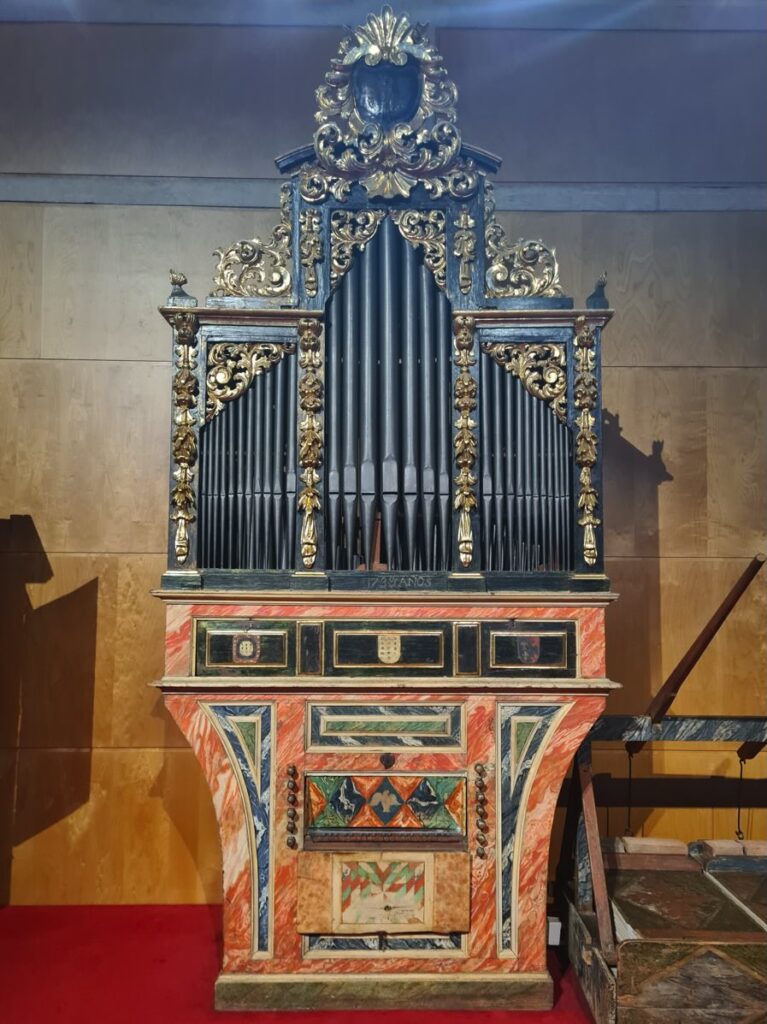
I did attend a huge amount of concerts being performed at the biggest baroque organ of Alsace, l’Orgue Dubois de Wissembourg. As a consequence, I became familiar with baroque french, but also spanish organ music. Currently I collect a couple of Spanish works I like so as to decide which one I want to learn to play next.
I’ve chosen the term “Music for Iberian-baroque style organs” with reason. First, the Iberian peninsula today consists of two countries, Spain and Portugal (which was sliced differently during the baroque period). Due to historic reasons, both countries had a massive influence on other parts of the world. Iberian style instruments can, for example, also be found on the Balearic Islands, on the Philippines or the “new world“.
So what are »Iberian-baroque style organs«? As with the rest of Europe, no organ equals another. They are all different, depending on regional differences, time, the believes of the builder, the economic situation of the buyer and the like. But anyway, there are some characteristics that are unique to this particular school of organ building.
As you can imagine, all the above had a massive influence on how those instruments have been played, and as a consequence, how written organ music has been composed. When listening to recordings of those instruments, I often wonder how it can be that an instrument with all those limitations sounds, well, that huge. No pedalboard?!? One keybed?!? But still a principal plenum and some solo voice on top of it?!? Yes, those instruments can do. Incredible. The booklet of »Iberische Orgelmusik des Siglo de Oro« of Gerard Gnann shares some further details concerning the intruments of that period.
Here’s some unstructured list of pieces I find noteworthy.
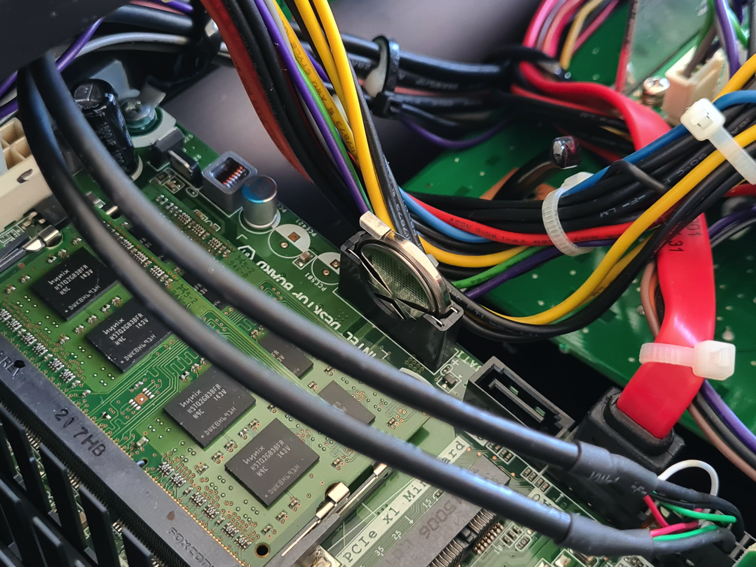
I can’t believe my Kronos is already over 10 years old. But it is, and as a consequence, it recently complained about a drained battery.
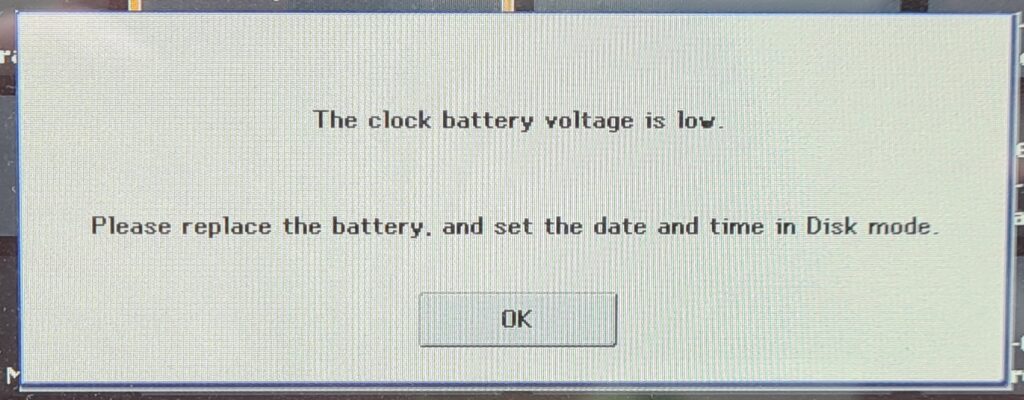
To do so, I used the following:
Here’s what I did:

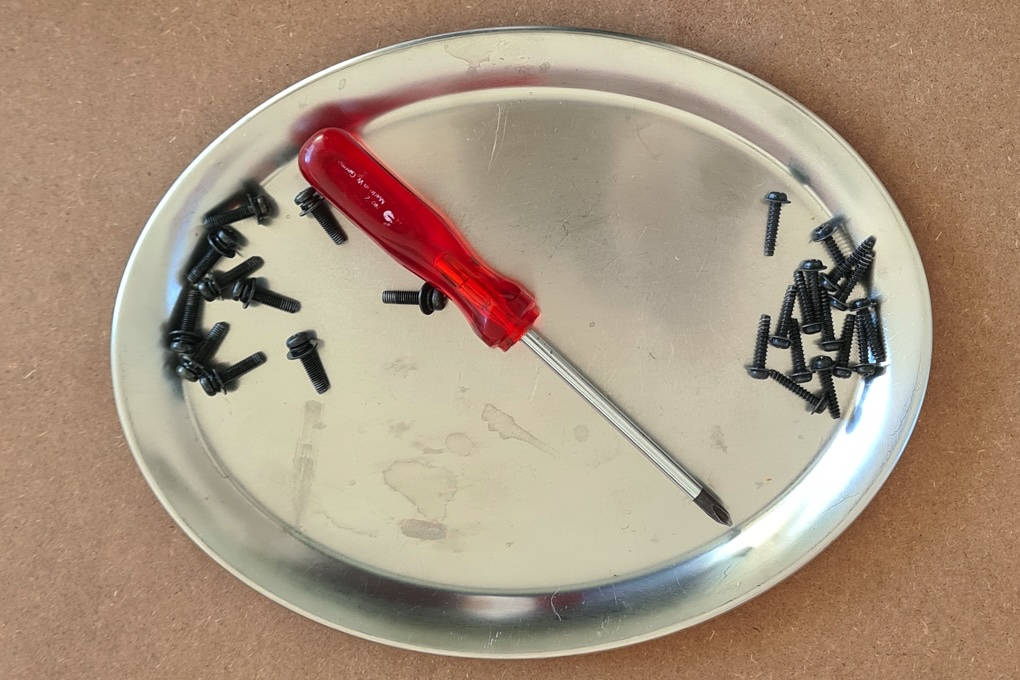

That’s it. The battery alert should be gone for the next decade.

Since several years, I run a privately hosted instance of Nextcloud for synchronizing files, calendars, and contacts across several devices. Even Apple’s calendar and contacts apps sync’ed nicely. At least until I recently tried to connect a machine running macOS Sequoia, which denied to collaborate.

The issue was caused by the fact that I didn’t install Nextcloud in the document root of my web server, but in a subdirectory (e.g. »yourdomain.com/nextcloud/«) instead. To circumvent the issue, I consulted Nextcloud’s documentation and placed a .htaccess file with the following content in the document root of the web server:
<IfModule mod_rewrite.c> RewriteEngine on RewriteRule ^\.well-known/carddav /nextcloud/remote.php/dav [R=301,L] RewriteRule ^\.well-known/caldav /nextcloud/remote.php/dav [R=301,L] RewriteRule ^\.well-known/webfinger /nextcloud/index.php/.well-known/webfinger [R=301,L] RewriteRule ^\.well-known/nodeinfo /nextcloud/index.php/.well-known/nodeinfo [R=301,L] </IfModule>
Of course you need to adjust the subdirectory name »/nextcloud/« to fit your installation. Still, the abbreviated address as used in Nextcloud’s documentation didn’t do the trick for me. I still needed to use the deep URLs as provided by Nextcloud’s UI:
I’m grateful for the excellent documentation of Nextcloud and uber.space, as well as the support service of uber.space who helped me to cope with the last hurdles. In case you are looking for a cool hosting provider, don’t hesitate to give them a try.

Many home organ consoles are equipped with thumb pistons. Some of them are dedicated to control combinations. When being pressed, they usually also send some MIDI command to MIDI out. In case of this Johannus console (branded as Kisselbach), the pistons send a SysEx command. In GrandOrgue, Ctrl-click on a combination slot, then »Wait for event«, then press the desired piston and the piston is connected to the combination slot. This works well for memory bank 1, pistons 1 through 8.
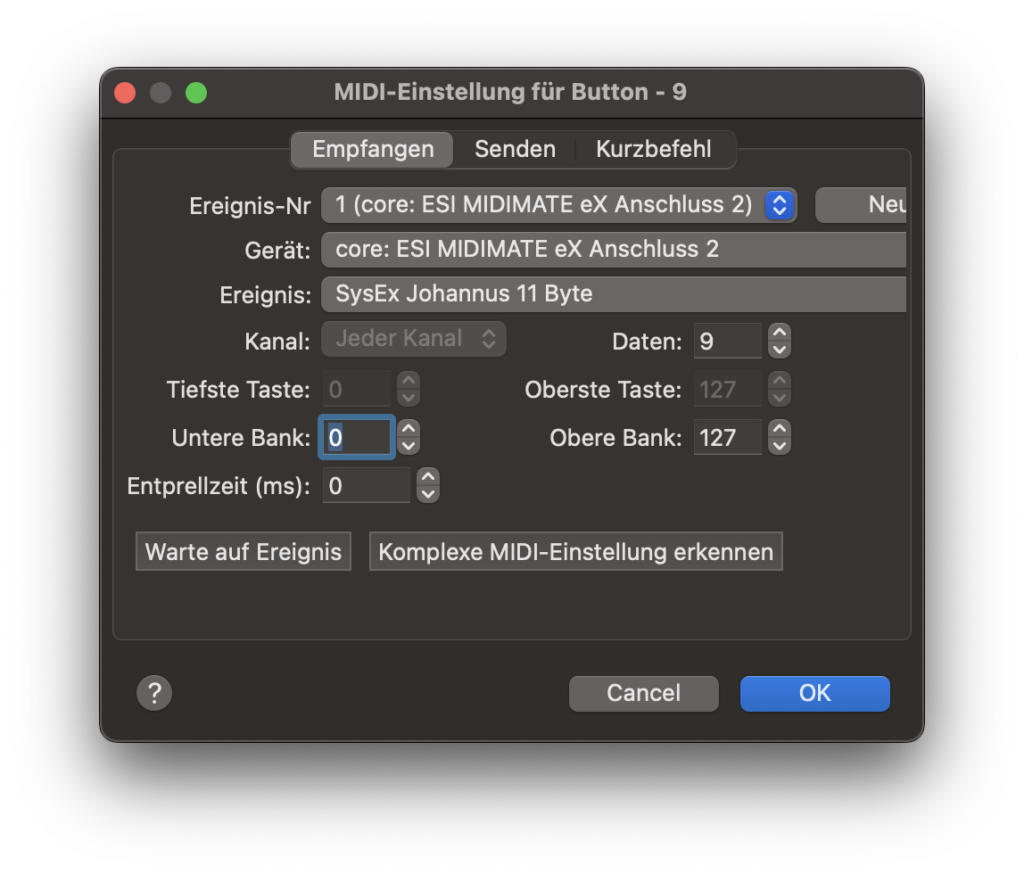
However, this is not the case for all the other memory banks. Here’s the SysEx commands:
Mem: 1, Pistons 1-8
F0 00 4A 4F 48 41 53 00 10 09 F7
F0 00 4A 4F 48 41 53 00 10 0A F7
F0 00 4A 4F 48 41 53 00 10 0B F7
F0 00 4A 4F 48 41 53 00 10 0C F7
F0 00 4A 4F 48 41 53 00 10 0D F7
F0 00 4A 4F 48 41 53 00 10 0E F7
F0 00 4A 4F 48 41 53 00 10 0F F7
F0 00 4A 4F 48 41 53 00 10 10 F7
Mem: 2, Pistons 1-8
F0 00 4A 4F 48 41 53 01 10 09 F7
F0 00 4A 4F 48 41 53 01 10 0A F7
F0 00 4A 4F 48 41 53 01 10 0B F7
F0 00 4A 4F 48 41 53 01 10 0C F7
F0 00 4A 4F 48 41 53 01 10 0D F7
F0 00 4A 4F 48 41 53 01 10 0E F7
F0 00 4A 4F 48 41 53 01 10 0F F7
F0 00 4A 4F 48 41 53 01 10 10 F7
Mem: 3, Pistons 1-8
F0 00 4A 4F 48 41 53 02 10 09 F7
F0 00 4A 4F 48 41 53 02 10 0A F7
F0 00 4A 4F 48 41 53 02 10 0B F7
F0 00 4A 4F 48 41 53 02 10 0C F7
F0 00 4A 4F 48 41 53 02 10 0D F7
F0 00 4A 4F 48 41 53 02 10 0E F7
F0 00 4A 4F 48 41 53 02 10 0F F7
F0 00 4A 4F 48 41 53 02 10 10 F7
The tenth byte always is 0x09 through 0x10 (the eight pistons). The eights byte contains the memory bank. However, the auto detection of GrandOrgue fails to recognize it properly. Fortunately it is possible to configure it manually by the field lower bank.
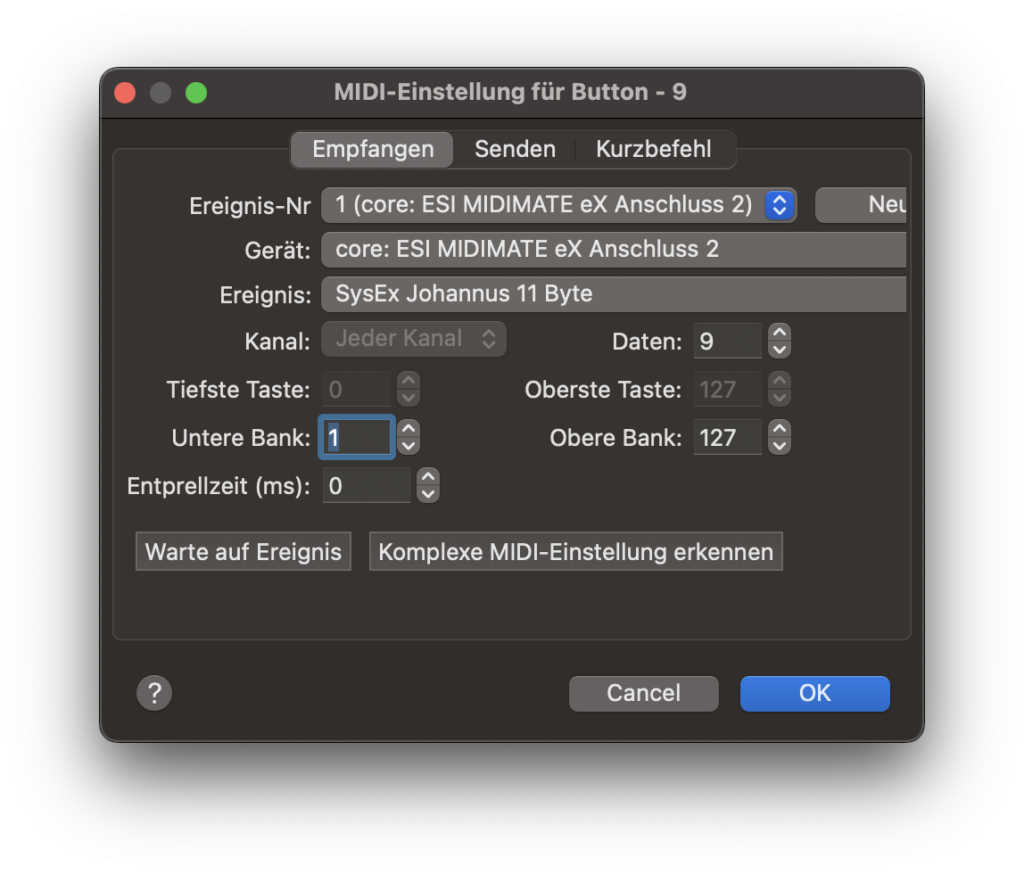
GrandOrgue has a total of 50 general combinations. I recommend to configure all of them. Do not forget to save the organ settings. From now on, the console controls can be used to control all of the 50 general combinations of GrandOrgue, not only 1-8.